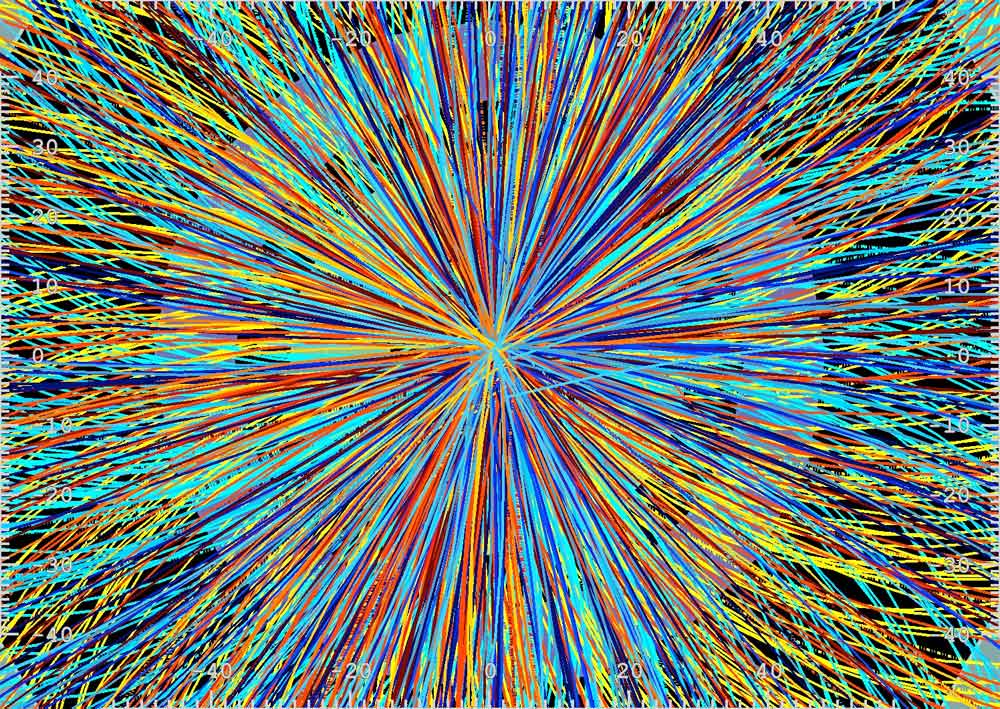Large Hadron Collider experiment investigates neutrino's minuscule mass
Scientists are investigating the elusive neutrino with a new experiment at the Large Hadron Collider (LHC).
Scientists used the Compact Muon Solenoid (CMS) detector at the LHC at CERN (the French acronym for the European Organization for Nuclear Research) near Geneva, Switzerland for a new experimental test investigating the mass of neutrinos.
Neutrinos, or "ghost particles," are subatomic particles similar to electrons but with no electrical charge and a minuscule, near-zero mass. The new study used data from the LHC's previous run.(In April, the particle accelerator was restarted after a three-year shutdown, which was implemented for upgrades and maintenance.)
This experiment was conducted to try and answer the question of why the neutrino has such a small mass. (The neutrino has such little mass that scientists throughout history have suggested it might have no mass at all.)
Related: Large Hadron Collider will explore cutting edge physics after 3-year shutdown
Produced within stars through nuclear fusion, neutrinos are strange and mysterious particles that have eluded our full understanding for years. We know that they are one of the most common particles in the entire universe; it has been estimated that about 100 billion neutrinos pass through every square centimeter of the human body every second.
According to the current Standard Model of particle physics, a theory that describes all known fundamental particles and three of the four forces in the universe, elementary particles like electrons gain their mass by interacting with a field associated with the Higgs boson particle, known as the Higgs field. But the neutrino doesn't play by these rules; the Higgs field cannot explain its minimal mass.
Breaking space news, the latest updates on rocket launches, skywatching events and more!
With this experiment, researchers tested what is called the "seesaw model" that some researchers think could explain the neutrino's mass. Within this theory, a light neutrino (a known particle) pairs with a hypothetical heavy neutrino, which acts like the heavier partner on a seesaw, lifting the lighter particle up and giving it its very light mass.
But for the seesaw model to work, the neutrinos involved would need to essentially be their own antimatter particles, called Majorana particles, according to a statement describing the new research. Antimatter particles have the mass of their corresponding particles but with an opposite electric charge. (The antimatter equivalent of the electron, for example, is the positron.)
So, to test the seesaw model with this experiment, researchers tried to find Majorana neutrinos in high-energy particle collisions at the LHC. The team used the CMS detector to collect the data from these collisions. While the study is recent, the collisions producing this data took place between 2016 and 2018.
The team didn't find any evidence of Majorana neutrinos in the data.However, the data they did collect helped them to set new limits on the seesaw model.
Now, while this is a new study from older collisions at the LHC, with the facility switched back on, the particle accelerator is ready to start making new collisions this summer, and researchers "can look forward to collecting more data and trying out the seesaw again," according to the same statement.
Email Chelsea Gohd at cgohd@space.com or follow her on Twitter @chelsea_gohd. Follow us on Twitter @Spacedotcom and on Facebook.

Chelsea “Foxanne” Gohd joined Space.com in 2018 and is now a Senior Writer, writing about everything from climate change to planetary science and human spaceflight in both articles and on-camera in videos. With a degree in Public Health and biological sciences, Chelsea has written and worked for institutions including the American Museum of Natural History, Scientific American, Discover Magazine Blog, Astronomy Magazine and Live Science. When not writing, editing or filming something space-y, Chelsea "Foxanne" Gohd is writing music and performing as Foxanne, even launching a song to space in 2021 with Inspiration4. You can follow her on Twitter @chelsea_gohd and @foxannemusic.

